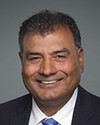Mr. Speaker, I would like to share my time with the member for Malpeque.
It is with great pleasure that I rise in this House today to talk about real change for Canadians. The middle class has gone too long without a raise, and in challenging economic times, we have taken action to help them.
In the next budget and over the next decade, our government will be making historic investments into infrastructure and supporting families through the Canada child benefit, which would lift hundreds of thousands of children out of poverty, and benefit nine out of 10 Canadian families. Bill C-2 is just one of many concrete actions that our government is undertaking in order to help the middle class. We were elected on a plan to grow the economy and help the middle class, and that is exactly what we did in December when the Minister of Finance introduced Bill C-2 in this place.
We are looking at initiatives to help the largest number of Canadians succeed, and we have already begun by cutting taxes for the middle class. Families work hard to make ends meet, and they need a government that understands their reality. The tax cut for the middle class would benefit many in my riding. This is not only true for my riding but for all Canadians. About nine million Canadians would benefit from this measure in 2016. Single individuals who would benefit would see an average tax reduction of $330 every year, and couples who would benefit would see an average tax reduction of $540 every year. The maximum tax reduction would be $679 per individual and $1,358 per couple. That is real change—putting more money in the pockets of the families who need it most. When the middle class is strong and prosperous, we create jobs, spur investment, and create a country that works for all Canadians.
That is not all. We are asking Canadians who have been fortunate enough to succeed to contribute a little more. That is why we are going to create a new tax bracket for those who earn over $200,000 a year. The new rate will increase from 29% to 33%. It will affect 1% of Canadians, but benefit most Canadians.
Bill C-2 also reduces the annual contribution limit for tax-free savings accounts from $10,000 to $5,500 and reinstates indexation of the TFSA annual contribution limit for 2016 and subsequent taxation years.
My opposition colleagues will say that this measure prevents Canadians from saving. That is completely untrue. Only 6.7% of eligible Canadians were able to make the maximum contribution to a TFSA. Doubling the annual contribution limit does nothing for the 93.3% of Canadians who cannot max out their TFSA contributions at the existing limit of $5,500 a year. Obviously most Canadians do not have enough money to make the maximum contribution to their TFSA. In fact, in 2013, Canadians had $592 billion in unused contribution room.
Governing this country calls for a long-term vision. In April 2015—I was not a member of Parliament then, but I was very interested in what the previous government was doing—the former finance minister said that lost revenue due to the higher TFSA limit was a problem for the Prime Minister's grandchildren to deal with. That is not the right way to do things. That is why we brought the limit back down to $5,500 per year. We want to safeguard the future of the next generation.
I am proud to be part of a government that serves all Canadians. That is why we are focused on implementing concrete measures that will help everyone. That is why we want to implement measures to grow the economy. That is why, when we spend money, we will make sure that every dollar is invested wisely.
For example, in the 2016 budget, we will create a Canada child benefit that will help nine out of 10 Canadian families. For the typical family of four, that means an extra $2,500 in help, tax-free, every year. The new Canada child benefit will be tax-free and tied to income. It will also provide more help to those who need it most, such as single-parent and low-income families.
Thanks to our plan, 315,000 children will be lifted out of poverty. Those who do not need it will not receive the Canada child benefit. This measure will mean real change.
Passing Bill C-2 is an important step that will help strengthen the middle class by implementing a tax cut that will benefit millions of Canadians every year.
We are asking those who have been lucky enough to succeed to contribute a little more. We will lower the TFSA contribution limit because it is the right thing to do, especially for the next generation. Of course, we believe in this investment tool, but raising the limit does nothing for 93.3% of Canadians.
I am very proud to support this bill because I know that the people of my riding, Glengarry—Prescott—Russell, will benefit a great deal from it. I encourage my colleagues across the aisle to think about the nine million Canadians who will benefit from this tax cut.
We did not close the door to TFSA holders. We simply set a reasonable limit that will allow their children and grandchildren to contribute to a TFSA and benefit from that tool. There are always limits in life. All we have done with TFSAs is set a reasonable limit.
I also urge my colleagues to take a look at the overall picture of what we are trying to accomplish and to take a look beyond Bill C-2.
We will reduce income tax for the middle class, and we will ask those who make $200,000 and more to contribute a little more. We will introduce a new Canada child benefit, which nine out of 10 families will benefit from.
Recognizing that we are in challenging economic times, we will invest in infrastructure. Of all the mayors that I have spoken to in Glengarry—Prescott—Russell, not one of them has told me that they have sufficient financial capacity to fulfill their infrastructure needs over the next 10 years. I know other mayors across Canada feel the same way.
Now, with the tax measures announced in Bill C-2 and the infrastructure plan that we will be announcing in the next budget, the overall plan to grow the economy makes sense for the middle class. The vision makes sense for our towns and our families. Bill C-2 is a pillar of that vision, and that is why I am supporting it.
I look forward to discussing any issues that I have raised in my speech with my colleagues in the House.










